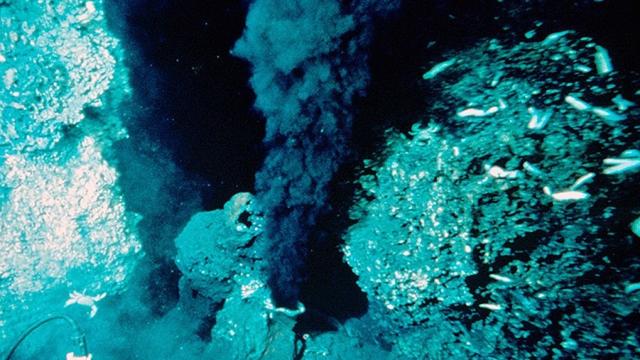Scientists have found deep-sea graphite that might help solve a deep-sea carbonaceous mystery, according to a new study.
The deep ocean contains various kinds of carbon, including fresh carbon-based material from sources on the surface and old carbon whose source is unknown. Scientists have theorised different sources for that older carbon, including soot from combustion processes, kicked-up sediments, or maybe hydrothermal vents. The recent discovery of graphite at these vents make them a likely source for this mysterious old carbon.
Carbon dating, a method to determine the age of molecules based on how a radioactive carbon isotope decays, has found that much of the ocean’s dissolved carbon is older than expected based on how molecules circulate through the ocean. Researchers have proposed various sources to explain this old carbon, including molecules that are difficult to break down or soot and charcoal resulting from burning material on the surface flowing into the ocean through rivers.
But past research seems to rule out rivers delivering burned carbon—which leaves the 400°C hydrothermal vents as one of the best candidates for the old carbon.
Back in 2017, scientists descended in the submersible Alvin to the East Pacific Rise 9° 50′ N vent field in the Pacific Ocean, southwest of Mexico. They took samples of the high-temperature hydrothermal vent fluid and analysed them back on the deck of the research vessel Atlantis. Lo and behold, the sample contained graphite emitted from the vents, according to the paper published in Nature Communications.
This alone means that the vents are a worthy candidate as the source of the carbon. But there’s a lot work left to do. It’s still unclear how the carbon forms in these vents, though the researchers proposed a mechanism based on the vents moving the material around under high temperature and pressures. Nailing the vents as the source of this ancient carbon would also require knowing just how much carbon they (and the other vents) produce.
I’m just thrilled that people still get to experience rides in Alvin. “What’s great about Alvin is that you can be down there with the vent, get direct samples, and see everything in 3D,” Estes told Gizmodo. “I felt so focused and exhilarated and excited to be there.”
